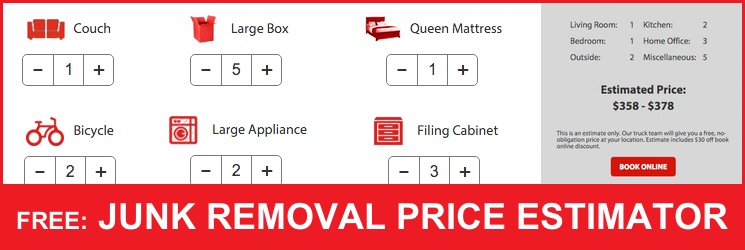The Ultimate Guide To Selecting The Appropriate Dumpster Dimension For Your Project
The Ultimate Guide To Selecting The Appropriate Dumpster Dimension For Your Project
Blog Article
Authored By-Cabrera Rodgers
When embarking on a task that requires a dumpster, the dimension you choose can substantially impact its performance and cost-effectiveness. Imagine having the excellent container that suits all your waste without being excessively large or also little. It all begins with understanding the nuances of your task and choosing a dumpster size that lines up with your certain demands. So, before you choose, consider the aspects at play to make certain a smooth waste management process from start to finish.
Aspects to Consider
When deciding on the appropriate dumpster dimension, there are several crucial variables to consider.
Initially, think of the sort of waste you'll be dealing with. Different products may call for differing amounts of room, so understanding what you'll be putting in the dumpster is vital.
Next, assess the amount of waste you expect to create. If you ignore the quantity, you may need to make several trips to get rid of every little thing, which can be inconvenient and expensive. On the other hand, leasing a dumpster that's too huge can result in unneeded costs.
Additionally, consider garbage removal container rental where the dumpster will certainly be placed. Guarantee there suffices room for the dumpster to be provided and picked up with no obstructions.
Lastly, think about any kind of weight limitations that might use. Surpassing the weight limit can cause added charges or even the rejection of service.
Dumpster Size Options
For selecting the appropriate dumpster size, it's necessary to have a good understanding of the readily available options. Dumpster sizes commonly range from 10 to 40 cubic lawns, with variations in between.
A 10-yard dumpster is suitable for tiny projects like a garage cleanout or a little improvement. If you're dealing with a medium-sized project such as a kitchen remodel or a cellar cleanout, a 20-yard dumpster might be the ideal selection.
For bigger projects like a whole-house restoration or business building, a 30 or 40-yard dumpster could be better to suit the volume of waste produced.
When picking a dumpster size, think about the amount and type of debris you anticipate to get rid of. just click the next post 's much better to choose a somewhat bigger size if you're unsure to stop overfilling. Keep in roll.off dumpster , it's even more cost-effective to lease a dumpster that fits your requirements instead of needing to order an extra one.
Matching Dimension to Job
Optimally matching the dumpster dimension to your task is critical for effective waste administration. To figure out the best dimension, consider the extent and nature of your job.
For small household cleanouts or improvements, a 10-yard dumpster may be enough. These are usually 12 feet long and can hold around 4 pickup truck loads of waste.
For bigger tasks like remodeling multiple areas or removing a huge estate, a 20-yard dumpster might be preferable. These are around 22 feet long and can hold approximately 8 pickup truck tons.
If you're taking on a significant building and construction task or business improvement, a 30-yard dumpster could be the most effective fit. These dumpsters are about 22 feet long and can accommodate concerning 12 pickup tons of debris.
Matching the dumpster size to your project ensures you have sufficient area for all waste products without paying too much for extra capacity.
Final thought
In conclusion, selecting the appropriate dumpster size for your project is essential for efficient garbage disposal. By considering elements like the type and amount of waste, area accessibility, weight limitations, and spending plan restraints, you can guarantee you have the ideal size dumpster for your requirements. Make certain to match the dimension of the dumpster to the scope and nature of your project to avoid overspending on unneeded expenses.
